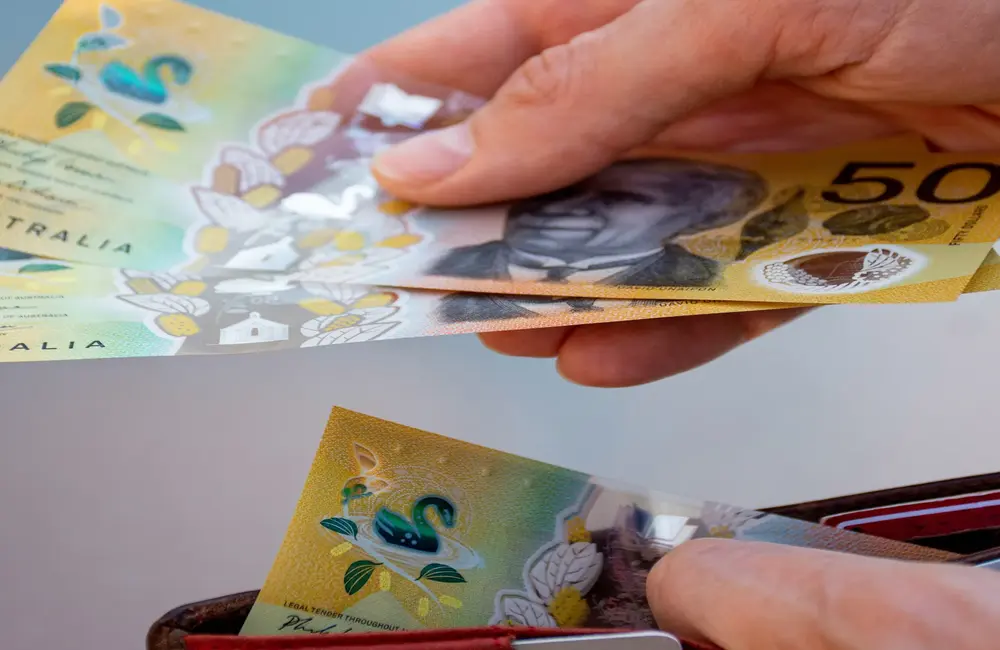Australian investors should strap themselves in for higher rates after consumer prices blew through analysts’ estimates to jump to their highest in eight years, adding to pressure on the Reserve Bank of Australia to start unwinding its pandemic-era easy-money settings.
Trimmed mean inflation, which excludes the most volatile items and is the Reserve Bank’s preferred measure for the purposes of policy making, rose 2.6% year-on-year in the December quarter, two years ahead of the bank’s own forecasts and well in its 2%–3% target range. That’s the highest reading since June 2014. The index gained 1% on a quarterly basis.
Prices surged past forecasts. The loser there was the RBA which had banked 2.25% in its November estimates. Economists at Westpac and Commonwealth Bank had expected 2.4% and 2.5%, respectively.
After saying in December that a combination of conditions required for a rate rise was unlikely to be in place this year, Tuesday's report means Governor Philip Lowe will be limbering up his backflipping skills, said Stephen Miller, an adviser at GSFM funds management.
“It’s a wake-up call for the RBA. Australia is different but not that different. Prices are rising all over, there is no reason to believe we would be any different.” he says.
“The numbers are a wake-up call. They mean multiple policy rate rises in 2022, notwithstanding the Governor’s calling such rises highly unlikely last year.”
Derivatives markets are already wagering on higher rates. Cash rate futures are already pricing in rates reaching 1% by December. The hikes themselves will begin in March, with the first hike planned between May and June.
The overall consumer price index (CPI) increased 3.5% for the year. It tracks nearly 900,000 price changes each quarter across a basket of household goods and services. Quarter-on-quarter, CPI increased 1.3%.
The chief driver of price hikes were rising home building costs and the highest petrol prices since 1990. The latter increased 6.6% in the December quarter, and the former up 4.2%.
“Persistently strong demand for new dwellings in the face of ongoing shortages of building supplies and labour also contributed to the price increases for newly built houses, townhouses and apartments,” according to Michelle Marquardt, the head of prices statistics at the Australian Bureau of Statistics.
The increase in prices on Tuesday moves Australia into the company of those wealthy nations, struggling with the issue of inflation for the first time in a generation.
New Zealand and U.K. central banks raised rates last year to stave off higher prices. The US Federal Reserve is indicating as many as four rate hikes in 2022 ahead of its policy meeting this week, after US consumer prices in late 2021 grew to their most elevated since 40 years.
Bye bye bond buying
“Households can’t avoid it”
Rising costs for staples and the persistent effects of supply chain disruptions are signs inflation could stick around longer than anticipated, according to Warnes.
“The issue is non-discretionaries, aka essentials. That means households can’t escape inflation. Part of the problem,” he says.
The prices of non-discretionary goods and services rose 4.5% for the year, more than double the rate at which discretionary items increased. As prices soar, consumer staples food, fuel, housing and health are the type of goods and services households have little hope of consuming less off.
At the same time, supply chain bottlenecks and shortages were still resonating through the economy, propelling prices for goods higher. Goods inflation increased to 4.3%, buoyed by jumps in furniture, motor vehicles and clothing accessories, up between 5.7% and 6.8%. In contrast, services increased by 2.3%.
“More generally, disruptions to global supply chains and shortages of materials, seen most notably in the construction sector, together with rising freight rates and strong demand, were behind price rises across a broad range of products including materials to construct dwellings and motor vehicles, furniture and audio-visual equipment,” observes Marquardt.
An end to restrictions in many states and border reopenings before Christmas saw a surge in prices for domestic transport and accommodation, which rose 4.8%.
“A lot of these supply chain problems are going to be lingering for a bit. Yes, it’s slowing the rate of growth but there’s a lot of pandemic-related costs embedded into a lot of companies and that will keep prices up,” explains Warnes.
By all accounts, it makes it easier to start the slow process of winding back the bank’s easy-money policies given higher inflation, record low unemployment and higher rates abroad, analysts said.
“Lowe has boxed himself into a corner and the exit strategy is diagonally across the room,” says director of equity research Peter Warnes.
Unemployment dropped to 4.2% in December, levels we haven’t seen since Howard and Rudd, a little over a year ahead of the RBA’s central scenario forecast.
The first to go is likely to be the RBA’s quantitative easing program, where it buys $4 billion in government bonds every week in a bid to keep borrowing costs low and lending abundant.
The end of the pro-rata bond purchase program is already expected after the RBA’s forthcoming review, with analysts predicting that Tuesday’s inflation data will leave no room for the RBA but to announce its immediate termination at the next board meeting, which is due to occur on 1 February.
“There’s no need for the RBA to give the market any heads up it’s already moved ahead of them. The market has already priced it in,” Warnes says.
Volatility for equity markets
The ASX plunged below 7,000 points in the wake of the release. By the close the benchmark S&P/ASX200 was down 2.5%, a testament to the volatility surrounding central banks as they start raising rates in a world which has become used to easy money.
Higher rates, David Bassanese, chief economist of fund manager BetaShares, says, will feed into equity markets via bond yields. The threat of higher interest rates at home and overseas is driving up yields on benchmark government bonds. Higher yields discount the present value of companies’ future earnings, pinching valuations. They also make bonds a more appealing place to park cash.
“The gift that keeps on giving is that as bond yields grind higher, equity valuations should grind lower. That’s what we have out there and that’s what we will be continuing for a little while yet,” he says.
Ten-year Australian government bond yields jumped to 1.94% on Tuesday, from 1.57% a month before. The narrative is similar in the US as yields have been buoyed to 1.75%, versus the 1.49% recorded a month prior.
The swift shifts in global bond markets have already forced painful readjustments in stock markets worldwide. The once high-flying Nasdaq Composite has now fallen 12.5% this year, as selling spreads from beleaguered small caps to the inner sanctum of technology mega-caps. The Stoxx 600 in Europe has lost 6.9 percent, and the S&P/ASX 200 is down 8.3 percent this year.
But rising inflation will not sink all boats equally. Over the long term, stocks can do fairly well during periods of rising inflation, according to Russel Kinnel, director manager research. Look at companies with strong brands that can pass on price increases to consumers, he says.
Higher rates pads margins so banks and financials are historically safe inflation plays.

























